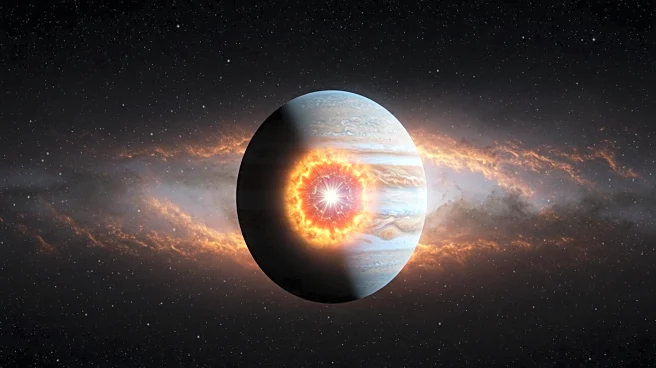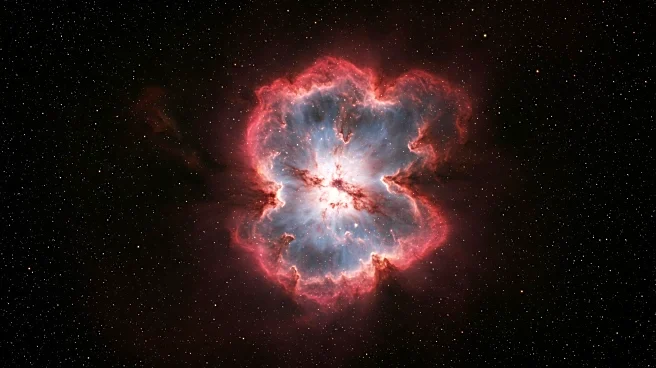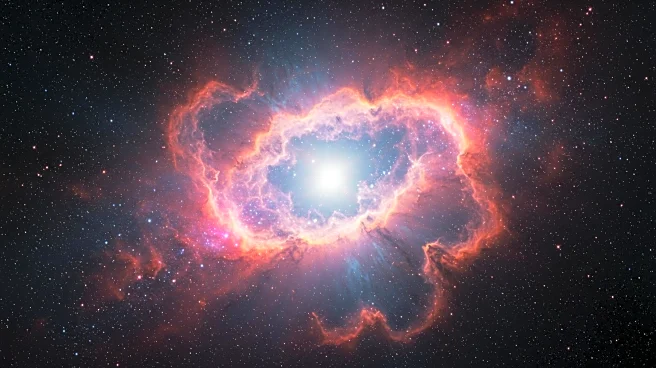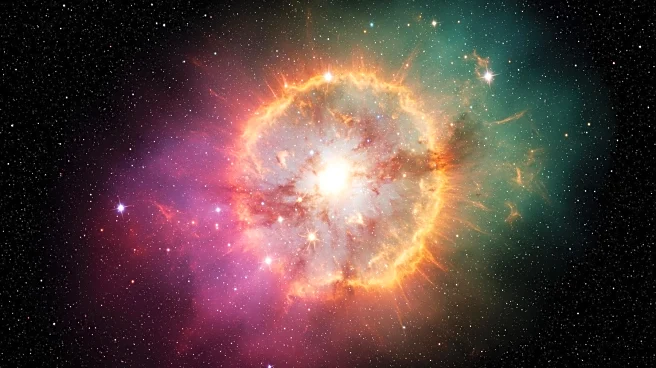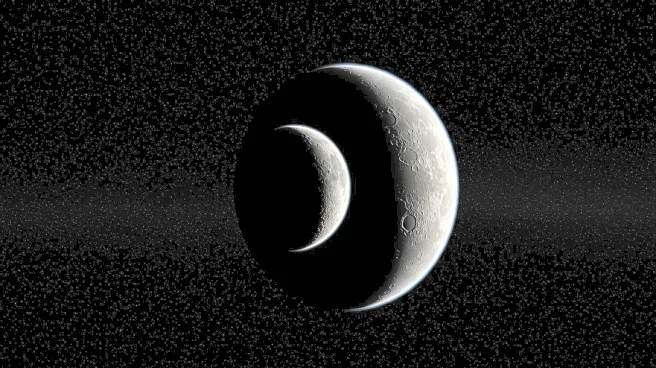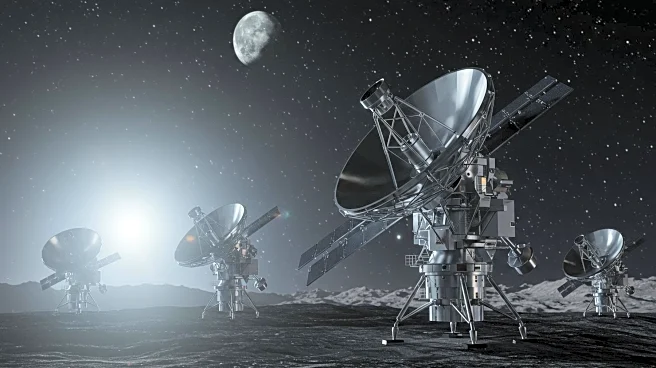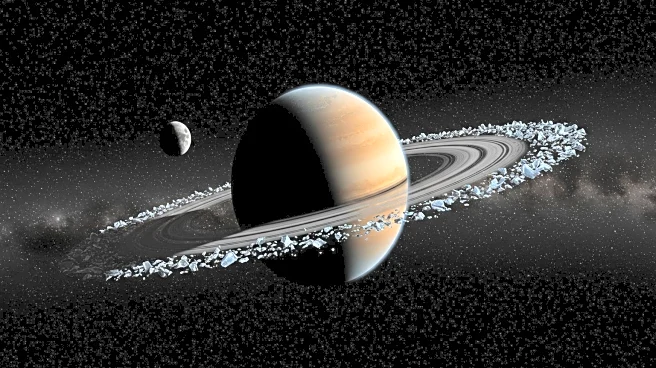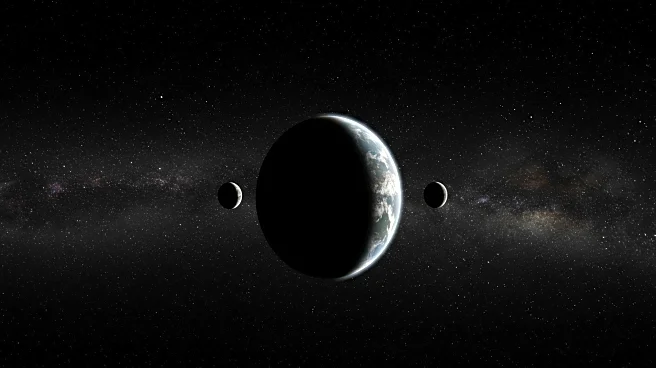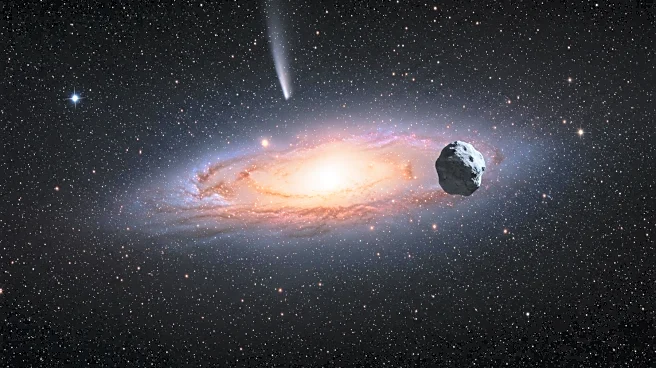What's Happening?
A recent study conducted by Durham University has challenged the prevailing theory that Jupiter's core was formed by a giant impact. Using advanced supercomputer simulations, researchers found that such an impact would not result in the planet's current dilute core structure. Instead, the study suggests that Jupiter's core developed gradually as the planet absorbed heavy and light materials during its formation. This finding contradicts earlier hypotheses that a massive collision with another celestial body was responsible for the core's unique characteristics. The research involved collaboration with scientists from NASA, SETI, and other institutions, utilizing state-of-the-art simulation techniques to explore the planet's interior dynamics.
Why It's Important?
The study's findings have significant implications for our understanding of planetary formation and evolution. By challenging the giant impact theory, the research opens new avenues for exploring how Jupiter and similar planets develop their core structures. This could lead to a reevaluation of existing models and theories about planetary formation, influencing future research in astronomy and astrophysics. Additionally, the study's insights may help scientists better understand the formation of exoplanets with similar characteristics, potentially impacting the search for habitable worlds beyond our solar system.
Beyond the Headlines
The implications of this study extend beyond Jupiter, as it suggests that other planets with dilute cores, such as Saturn, may have formed through similar gradual processes. This challenges the notion that rare, high-energy impacts are necessary for such core structures, indicating that planetary growth and evolution are more complex than previously thought. The research also highlights the importance of advanced simulation techniques in studying planetary dynamics, paving the way for more detailed investigations into the formation of celestial bodies across the universe.
